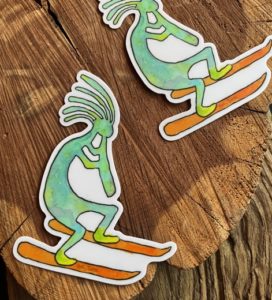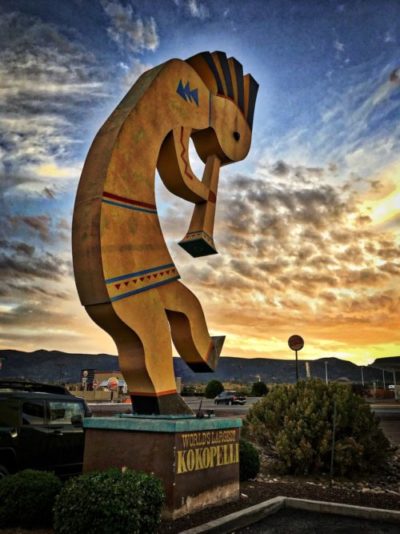No doubt, you’ve seen the dancing hunchback flute-playing stick figure on many an item associated with the American Southwest. To many, Kokopelli is the fun, whimsical character that symbolizes an Earth-friendly free spirit, the type of guy with kind bud and a hacky sack at a music festival. And that’s enough to make his fans wear him around their neck or stamp his image on their skateboard deck. But there is much more to this merry prankster than simply a good time.

Generally known as a fertility god, Kokopelli’s history goes back more than 3,000 years to the Ancestral Pueblo people (previously referred to as Anasazi) and has been found in petroglyphs and pictographs on cave walls and boulders from Mexico to Canada, with the Four Corners area of the Southwest being the most prevalent. location. The word “Kokopelli” is Hopi, a language of the Hopi Tribe that today is a sovereign nation in northwestern Arizona.
But Kokopelli got around. He found a home in the tales of many tribes. His large penis in some early drawings leaves little doubt that his role was fertility. Author John V. Young in his booklet Kokopelli: Cassonova of the Cliff Dwellers: The Hunchbacked Flute Player portrays him as a whimsical Casanova spreading love and conception. One legend has it that Kokopelli would come to a village at night, dancing and playing his flute, and the next morning every woman of age would be pregnant. Hence, to this day why many women wishing to conceive love to wear the symbol.
His powers weren’t limited to sex. In other stories, Kokopelli is an agricultural progenitor, and the hump of his back is believed to be a sack of seeds. One account goes that he traveled around and taught Native Americans how to plant corn. His wandering springtime visits conform to planting season; the breaths into his flute, the winds of spring, of life. Thus, his appearance portends rich crops.
In other lore, he carried songs on his back and traveled to trade old ones for new ones. Good luck was had by all who listened to his flute playing.

Because of his music and legend as a storyteller, some say he inspires creativity, which makes Kokopelli jewelry a thoughtful gift for artists, writers and musicians.
Of course, this is but a glance at the meanings behind the ubiquitous Native American figure. On my reading list is Kokopelli: The Making of an Icon by Hopi scholar Ekkehart Malotki and Kokopelli: The Magic, Mirth, and Mischief of an Ancient Symbol by Dennis Slifer
